Public Design Corp: Peripheral Centralities
Date
Spring/Fall 2024
Course
ARCH 509 Experimental Course
PIU Arco Jurubatuba and Real Estate Speculation in the South Zone of São Paulo: Struggles and Resistance
Peripheral Centralities investigates the anticipated impacts of the Jurubatuba Arch Urban Intervention Project (PIU-ACJ) on the transformation of the south zone of São Paulo City. This large strategic redevelopment project along the Pinheiros, Guarapiranga, and Jurubatuba Rivers aims to remake an area home to an estimated 150,000 residents, with many living in Special Zones of Social Interest (ZEIS) and confronting pressing housing and environmental challenges. The PIU will increase the population, create new jobs and economic activities, and provide social housing and public facilities. At the same time, this large urban transformation will have a major impact on the local informal precarious settlements and popular communities, which will once again face the threat of displacement and dispossession.
Working with our local partners, students in this Public Design Corps section engaged in the co-production of maps (and counter maps) and the documentation of sites and local narratives supporting community efforts to secure the right to housing and minimize displacement of vulnerable populations across the PIU-AJ. Fieldwork in São Paulo took place from May 24 to June 11, 2024, and apart from the documentation of sites and communities across the PIU-ACJ, PDC students focused on developing widely accessible visual materials, creating online platforms and educational media, presenting the preliminary research findings to the communities, and supporting the organization of the 4th Encontro de Favelas e Ocupações da Zona Sul.
This academic initiative builds on a collaboration with União dos Movimentos de Moradia (UMM), Centro Gaspar Garcia de Direitos Humanos, Defensoria Pública do Estado de São Paulo and Peabiru Trabalhos Comunitários e Ambientais, and a large network of local partners. The project departs from design exercises where reading urban conditions and framing problems leads to proposals as contingent solutions in place and time. Instead, students participate in the quest for urban justice by joining ongoing efforts by community partners and contributing our design skills to advocate for more humane urbanisms.
This website gives access to the materials developed as part of the course and offers additional links to learn more about the partnering organizations. While we have provided English translations for some of the content, the original materials accessible through Instagram, issuu, and videos on Vimeo are in Portuguese.
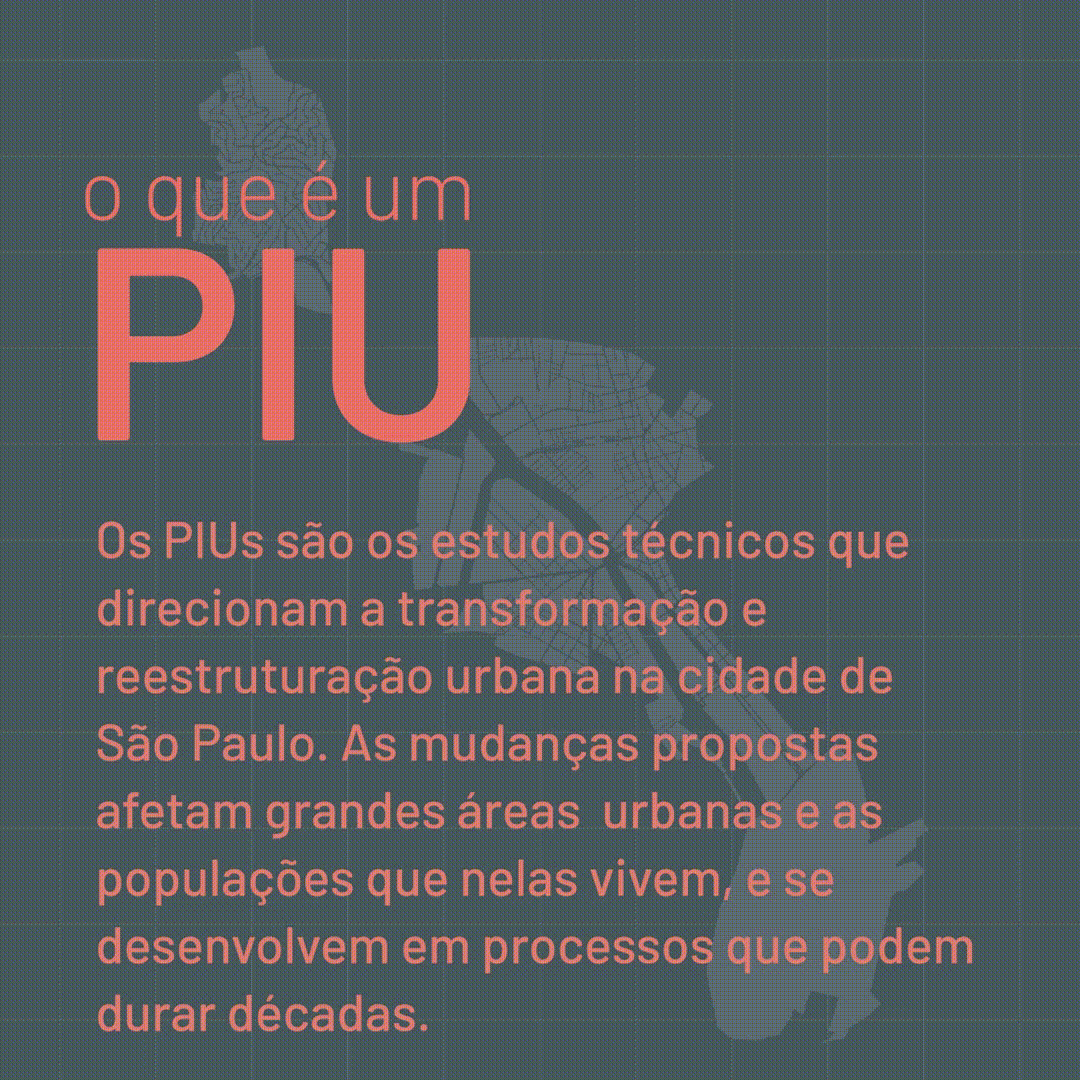
A Plan of Urban Intervention is a technical planning instrument to guide the urban transformation and restructuring in the city of São Paulo. The proposed changes affect large urban areas, impacting those living and working there. These scale and complexity of these plans can take decades to implement.
For more information, check this link:
https://gestaourbana.prefeitura.sp.gov.br/estruturacao-territorial/piu/
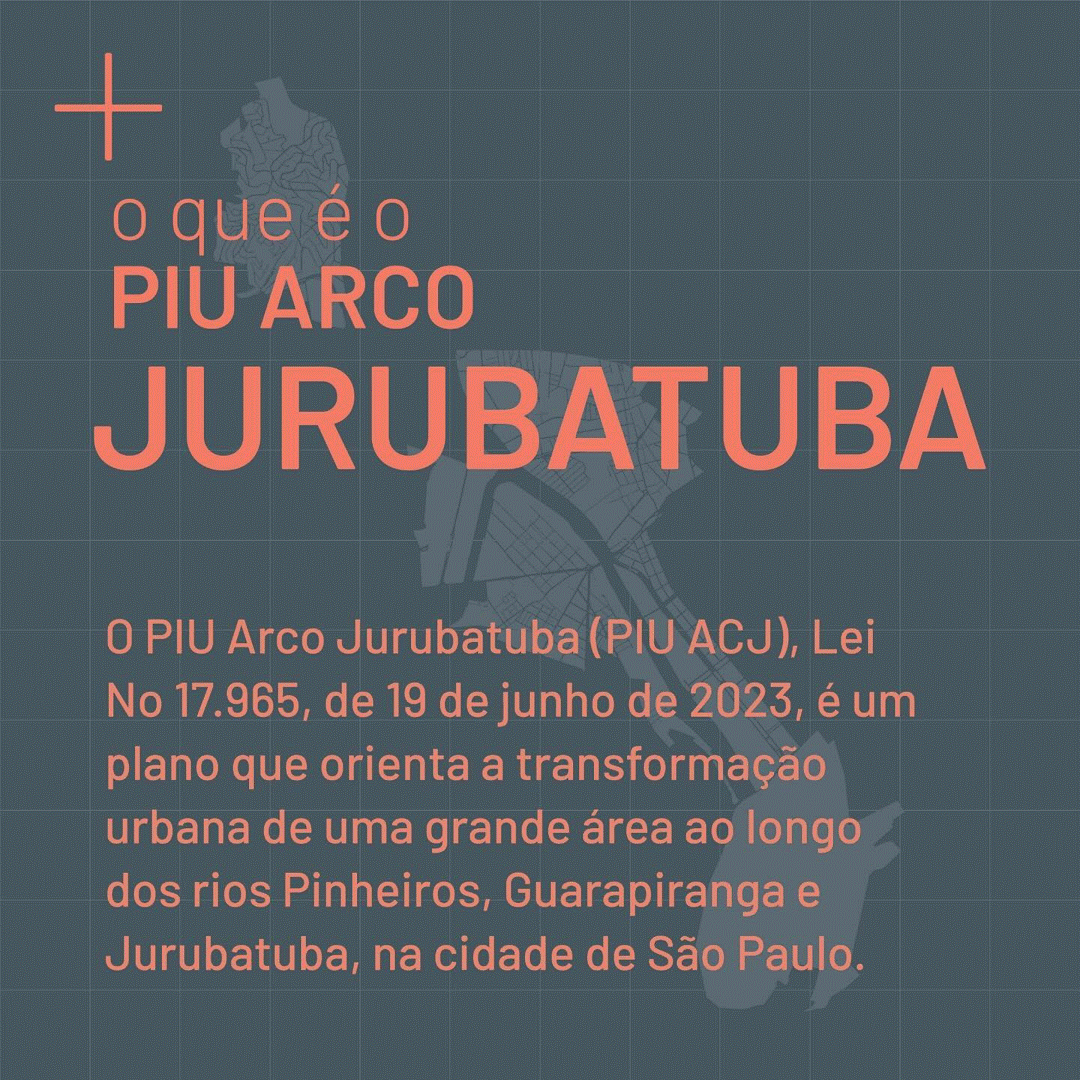
The PIU Arco Jurubatuba (PIU ACJ), Law No. 17,965 of June 19, 2023, plans the urban transformation of a large area along the Pinheiros, Guarapiranga and Jurubatuba rivers in the city of São Paulo. The plan aims to better use the land and upgrade the urban infrastructure. The PIU ACJ extends to the subprefectures of Santo Amaro, Cidade Ademar, Campo Limpo, Mboi Mirim and Capela do Socorro and will be further developed through three different Urban Intervention Areas (AIU): Vila Andrade, Jurubatuba and Interlagos.
For more information, check this link:
https://gestaourbana.prefeitura.sp.gov.br/piu-arco-jurubatuba/
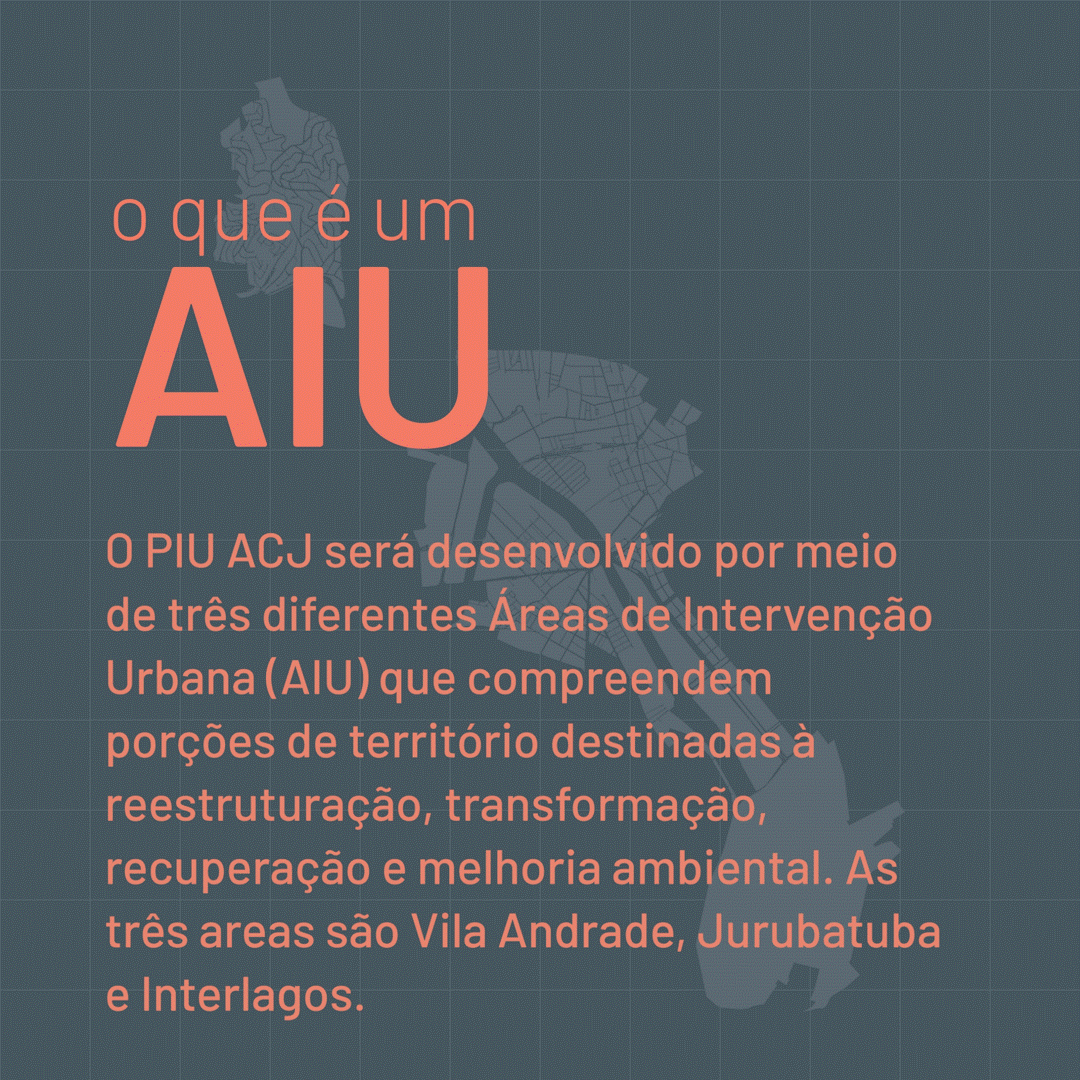
The PIU ACJ will be developed through three different Urban Intervention Areas (AIU) that comprise portions of territory destined for restructuring, transformation, recovery and environmental improvement: Vila Andrade, Jurubatuba, and Interlagos.
For more information on the AIUs, check this LINK:
https://gestaourbana.prefeitura.sp.gov.br/estruturacao-territorial/areas-de-intervencao-urbana/
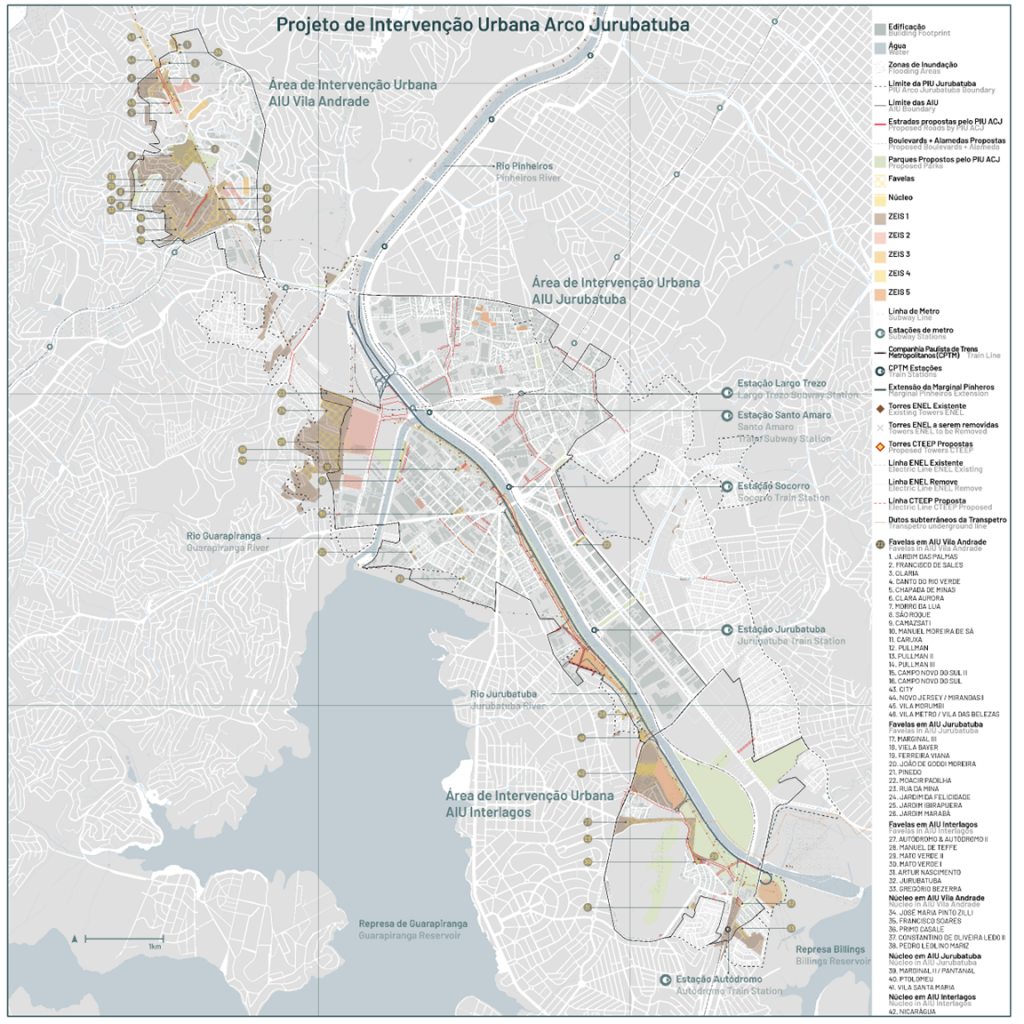
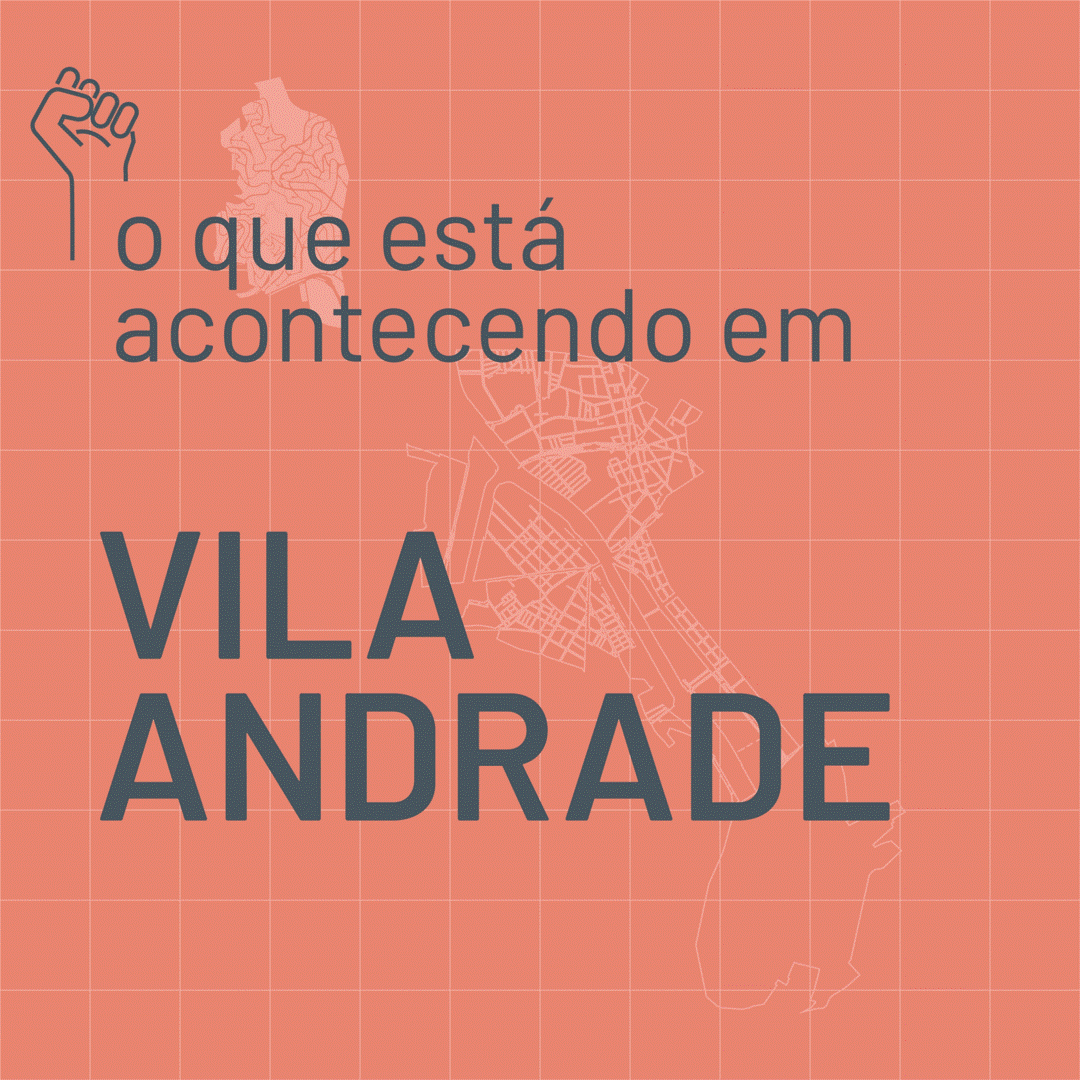
AIU Vila Andrade is mainly residential, with huge socio-economic disparities. In the eastern part, Morumbi, one of the city’s most exclusive neighborhoods, has very high land values and exerts strong real estate pressure. In the west, large populations live in favelas and popular communities lacking access to basic urban services. Separating the two is a linear strip containing major regional infrastructure (CTEEP and ENEL transmission lines, Transpetro gas pipelines).
The AIU VA seeks to qualify this urban space and articulate housing programs. The most important actions are road restructuring, a new environmental network of green areas, and the provision of social housing. All these improvements will require the demolition and displacement of entire neighborhoods along key electricity and gas supply lines. DSecuring all impacted families are rehoused is a key priority for community groups and housing movements.
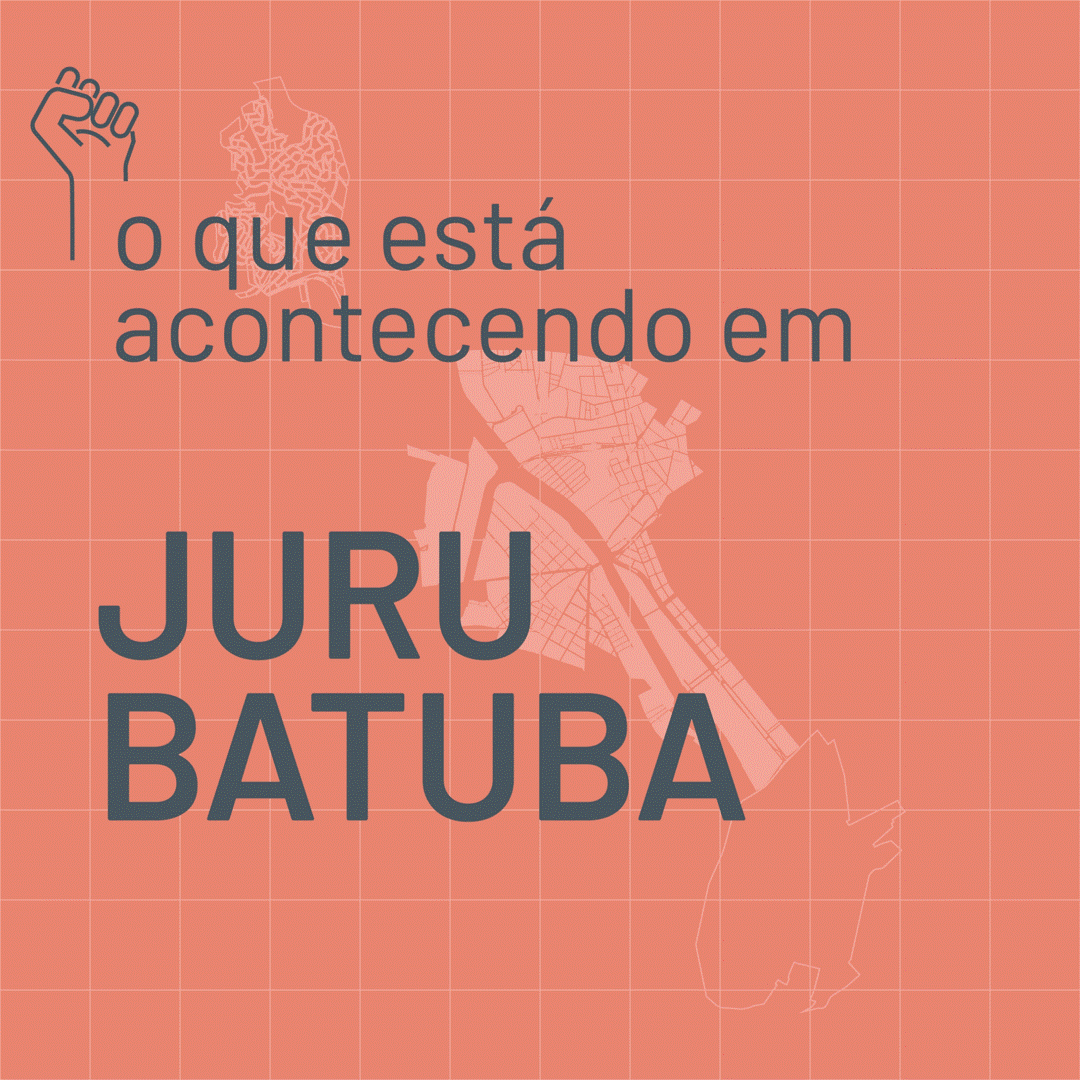
AIU Jurubatuba includes two important metropolitan centralities: the metropolis’ largest employment and services hubs (Faria Lima, Luís Carlos Berrini and Chucri Zaidan) and the dense area characterized by Santo Amaro Avenue and Line 5 Lilac of the Metro. The AIU JU aims to expand densification along the Jurubatuba River and the Guarapiranga Canal. In this area, the expansion and creation of new roads, such as the extension of the Marginal Pinheiros, will improve connectivity, but will also impact existing communities. Other public works include park interventions, drainage improvements and the expansion of bicycle infrastructure.
Students documented developments in the area, particularly the Pantanal Community along the banks of the Guarapiranga River. During the community gathering, residents shared they are following the municipal government’s plans with the most attention and concern. Although the proposed road improvements could help mitigate flooding caused by poor drainage in the area, the lack of information raises concerns about potential negative impacts.
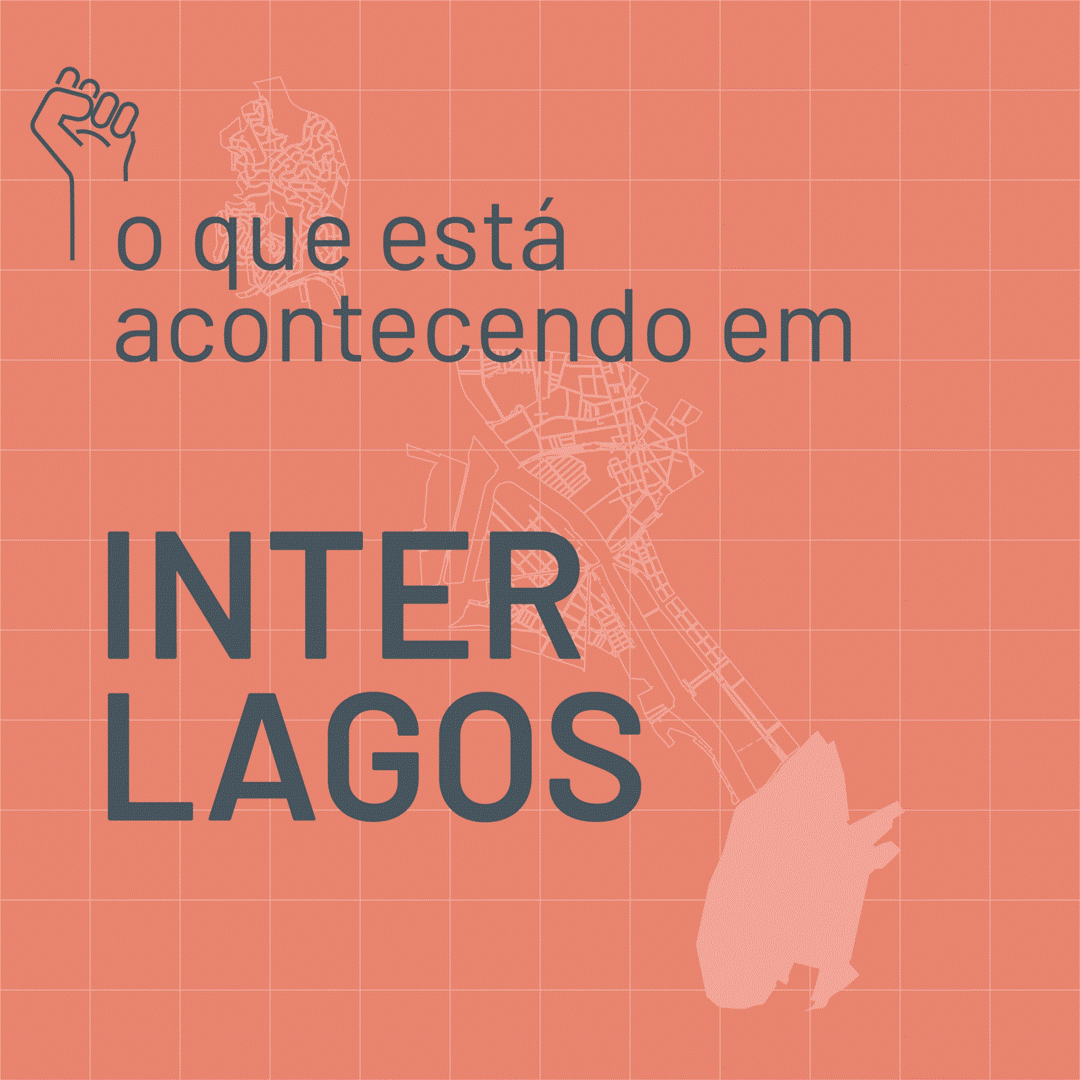
The Interlagos Urban Intervention Area (AIU) is set within a 376-hectare perimeter, is home to the José Carlos Pace race track, host of the Brazilian Grand Prix, and has lower building densities, more open space and remnants of cattle grazing and green areas along the river. The main objective of AIU IN is to integrate the Autódromo with its surroundings through a series of public interventions. Local communities will be impacted by the extension of the Marginal Pinheiros, the creation of new parks and squares, environmental axes, cycle paths over rivers and streams and drainage beds.
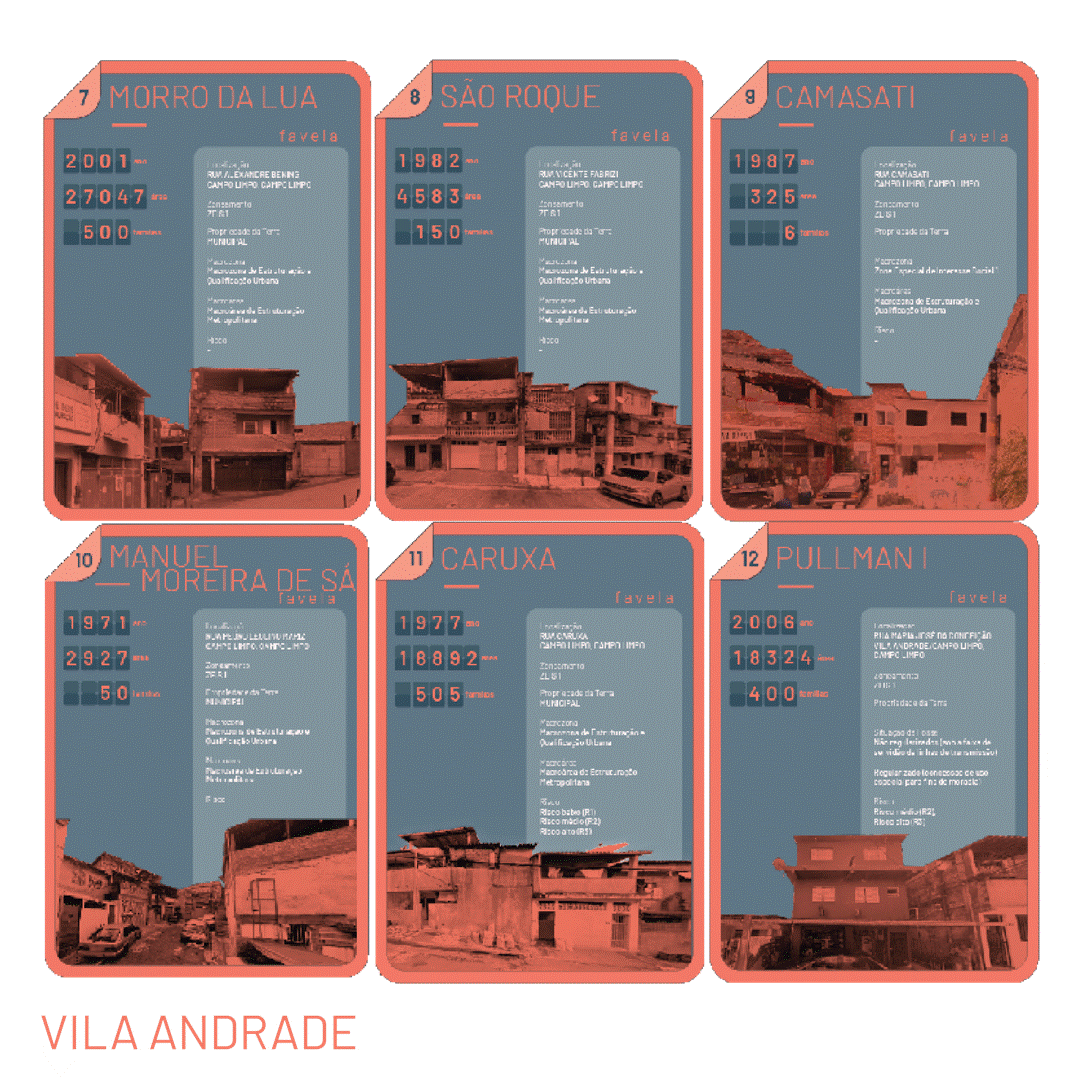
The Vila Andrade, Jurubatuba and Interlagos Urban Intervention Areas (AIU) include many consolidated popular communities. Among them, there are dozens of favelas, nuclei and occupations located in Zones of Special Social Interest (ZEIS) and characterized by modest constructions, irregular or non-existent access to adequate infrastructure and conflicts over land ownership.
The Vila Andrade UIA will affect 19 favelas and 5 nuclei, impacting the livelihoods of more than 4,900 families.
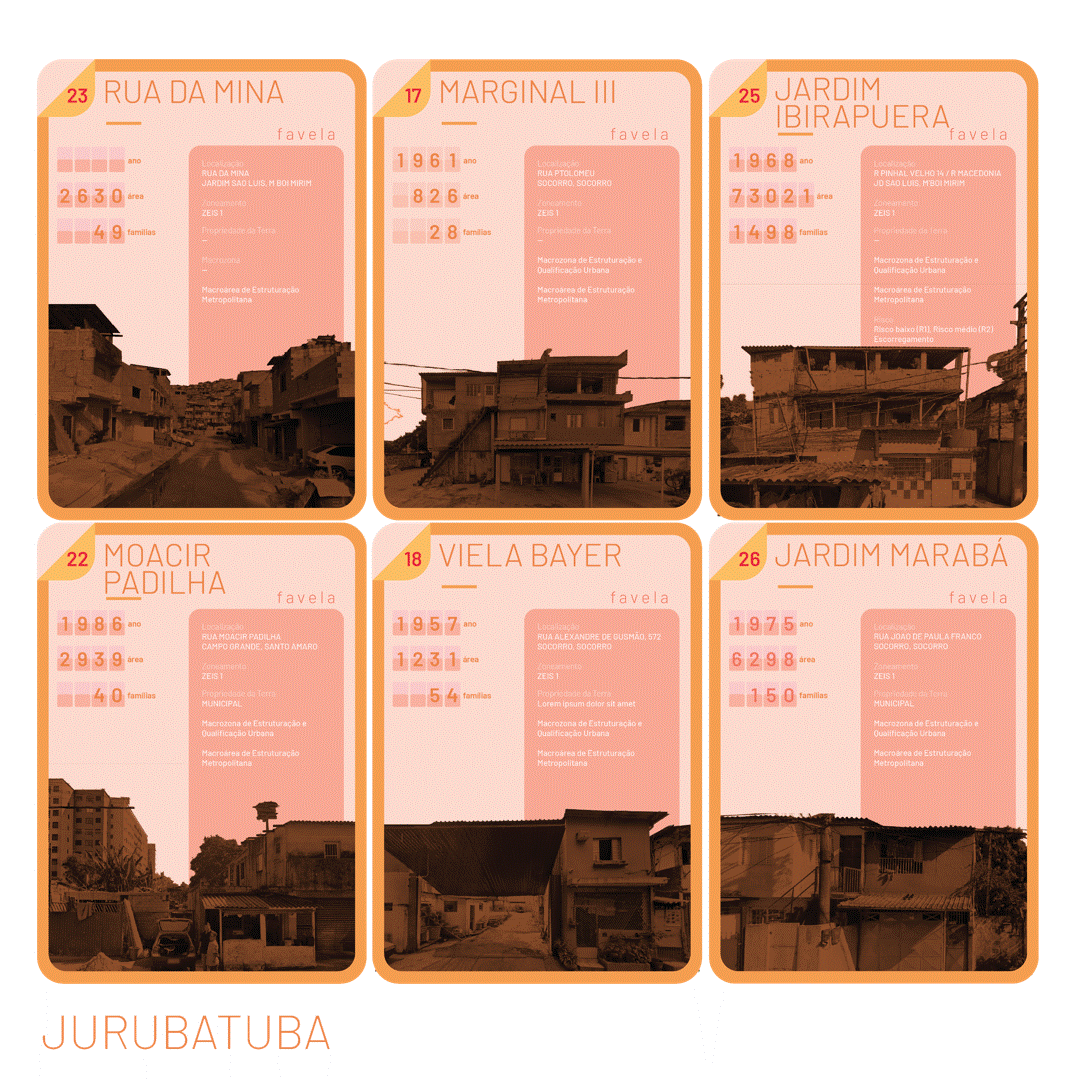
In the Jurubatuba UIA, more than 3,300 families living in 10 favelas and 3 nuclei will be affected. In Interlagos, 6 favelas and 2 nuclei will be affected, affecting 1,200 families.
In the Jurubatuba UIA, more than 3,300 families living in 10 favelas and 3 nuclei will be affected. In Interlagos, 6 favelas and 2 nuclei will be affected, affecting 1,200 families.
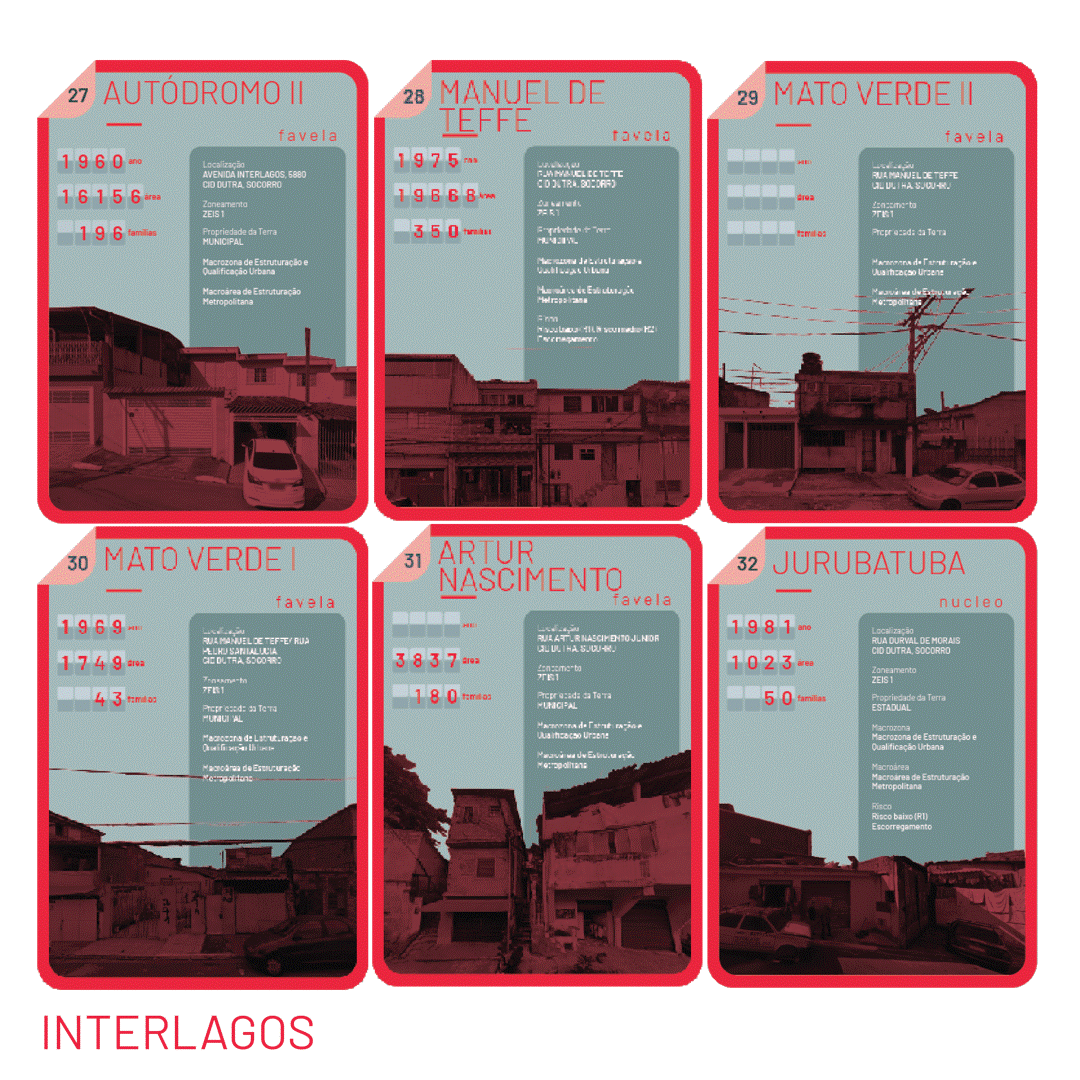
In Interlagos, 6 favelas and 2 nuclei will be affected, affecting 1,200 families.
Making room for additional density and uses will not only remake outdated industrial areas, but will also directly impact current residents. Drawing each community is an act of defiance against the omissions of official maps, which do not represent communities and only provide outdated census data. The need to recognize each community is the first step towards including all residents and providing adequate housing for them.
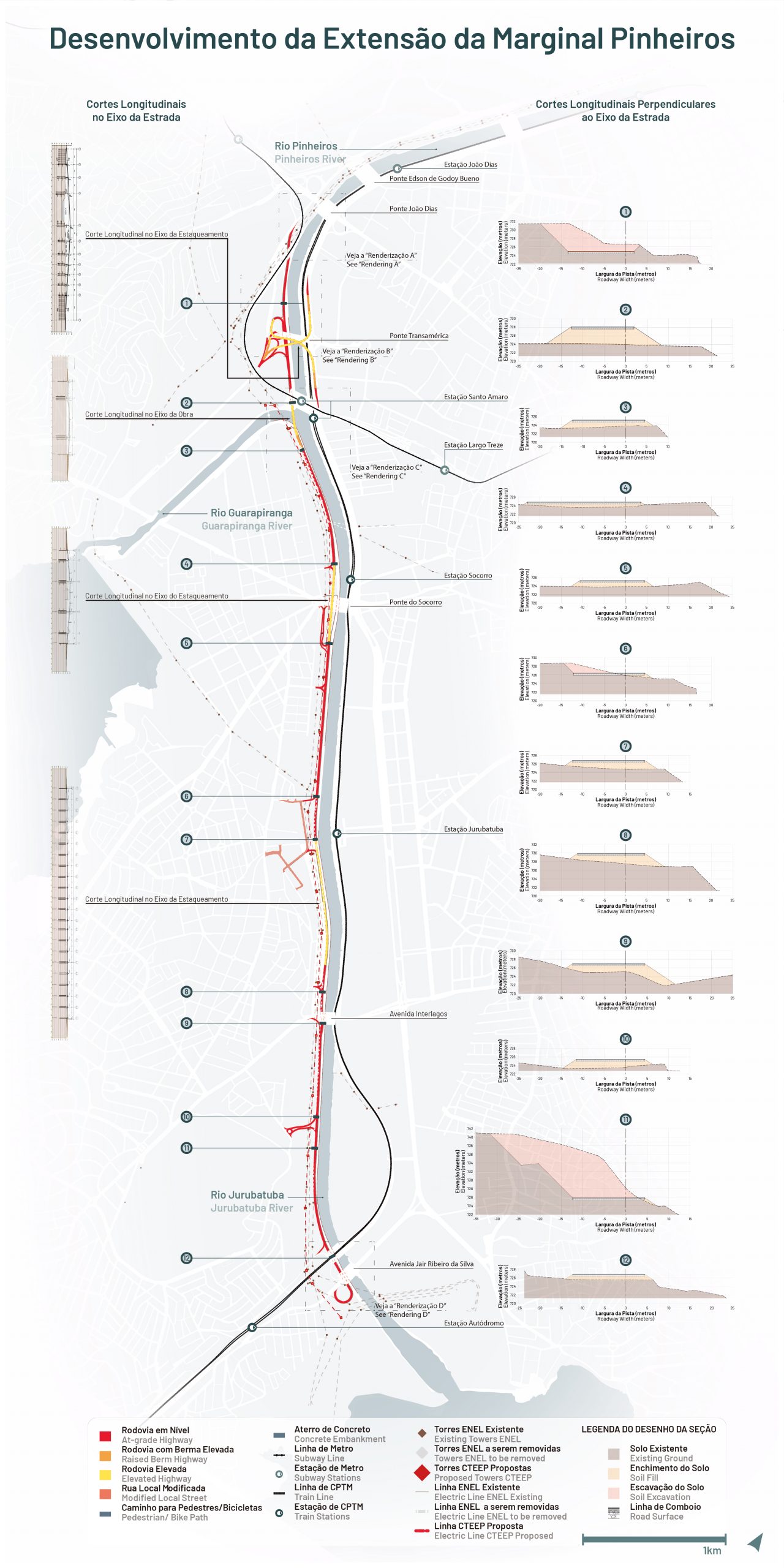
The Nova Marginal Pinheiros highway project extends the existing thoroughfare south, adding 8 km along the Pinheiros River’s west bank. With an estimated R$1.7 billion budget that promises to reduce congestion, improve connectivity, flooding response and travel times, it comprises 3 southbound lanes, 5 new bridges, and 18 connection points to existing streets. The implementation will require the relocation of numerous ENEL and CTEEP towers and power line segments and will require substantial groundworks.
The project was approved following amendments to the City’s Master Plan reclassifying the area from a Zona Especial de Proteção Ambiental (ZEPAM), for the preservation and protection of environmental heritage, to a Zona Eixo de Estruturação da Transformação Metropolitana (ZEM), where construction and bonus densities are allowed. The intervention lies within the Area of Urban Intervention Jurubatuba, part of the PIU ACJ, and the lack of details on the anticipated displacement this large infrastructure will cause adds to the concerns that favelas and occupations dwellers in the area already have.
The Marginal Pinheiros extension has faced strong resistance from activists and residents who oppose the disruption of 130 hectares of a riverside green space designated for an urban park in previous planning initiatives. Opponents claim the project runs counter to contemporary urban sustainability and climate action mandates. While the implementation is currently suspended by the Tribunal de Contas do Município (TCM), Mayor Nunes remains fully committed to the project as a cornerstone achievement of his administration, and faces reelection this year. Neighborhoods impacted by the project include Jardim São Luís, Vila Socorro, Viela Bayer, Socorro, Jardim Marabá, Vila Santa Maria, Vila da Paz, Nicarágua, Autódromo I & II, and Manuel De Teffe.

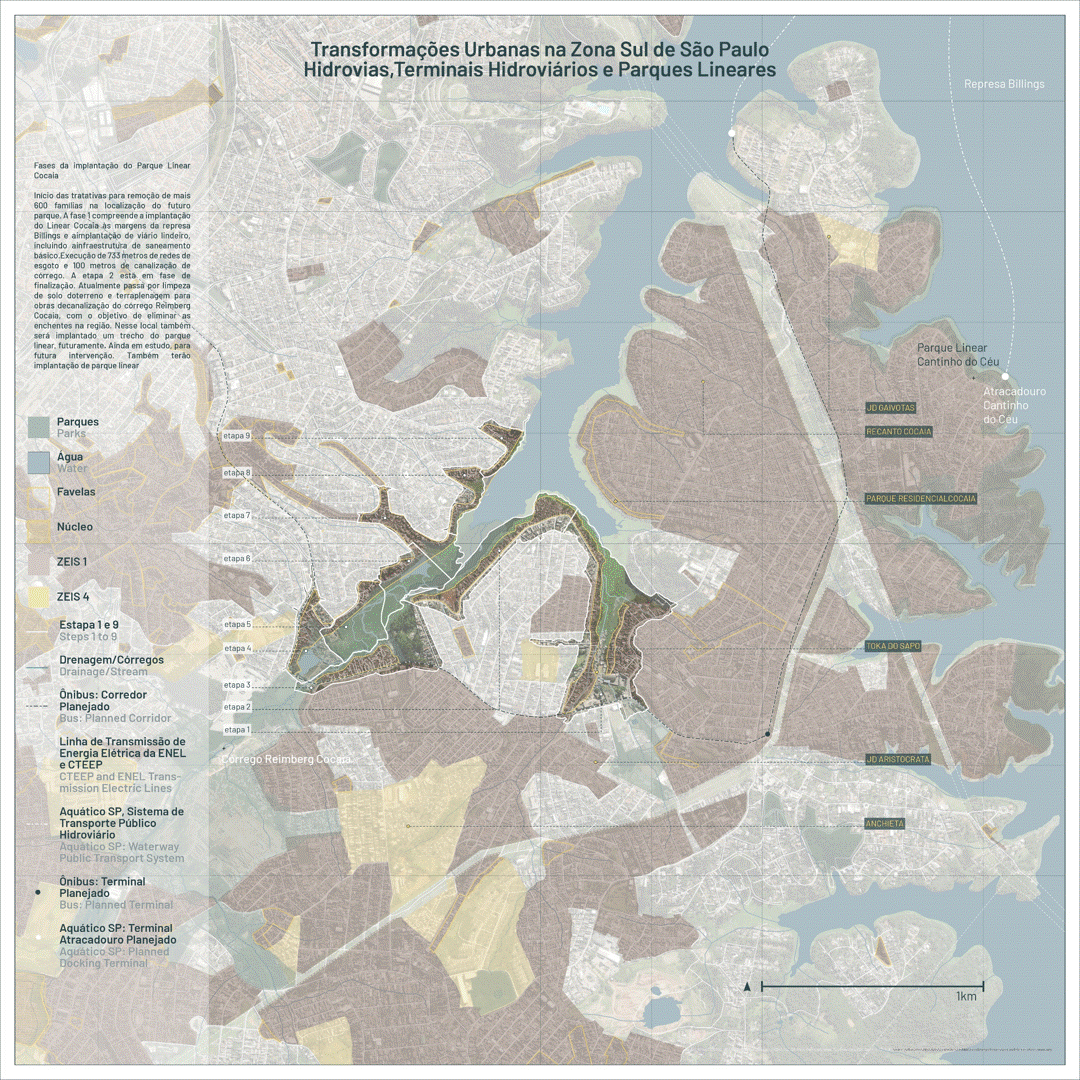
If the PIU Arco Jurubatuba aims to remake the areas along the Pinheiros, Guarapiranga and Jurubatuba Rivers, the Linear Parks along the Billings Reservoir follow a similar pattern. Part of the Programa Mananciais for the protection of the Guarapiranga e Billings watersheds, the linear parks aim to turn the precarious settlements along the shorelands into parks, removing sewage discharges and upgrading infrastructure.
Following the blueprint of the Cantinho do Ceu Linear Park, the Linear Park Ribeirão Cocaia includes 9 stages and anticipates the displacement of more than 2,500 residents currently living in the area. While this project will bring sanitation and better transportation and recreational infrastructures, community members are anxious over the anticipated displacement and the lack of alternative housing options and proper compensation. Additional plans for the expansion of the water taxis and bus terminals will increase the number of displaced families in the area.
This is the common denominator for families in the large areas impacted by the Parque Linear do Ribeirão Cocaia and the PIU Arco Jurubatuba. The municipal government’s lack of communication and transparency regarding official plans add to the abandonment and uncertainty many families face. Land has become a commodity and housing a financial asset and the real estate pressures are starting to be felt in the South Periphery.
< Before becoming law and moving on to implementation, PIUs follow long processes that can take years and must involve the participation of society. The timeline shows this path from the first formulation of the PIU ACJ in the 2014 PDE, its temporary halt in 2018 due to the lack of specificity in the housing plans for the populations of the zones of special social interest (ZEIS) and the environmental impacts, to the present day.
The timeline also collects information on other relevant elements in the development of urban plans and shows the continuity of mayors during this period.
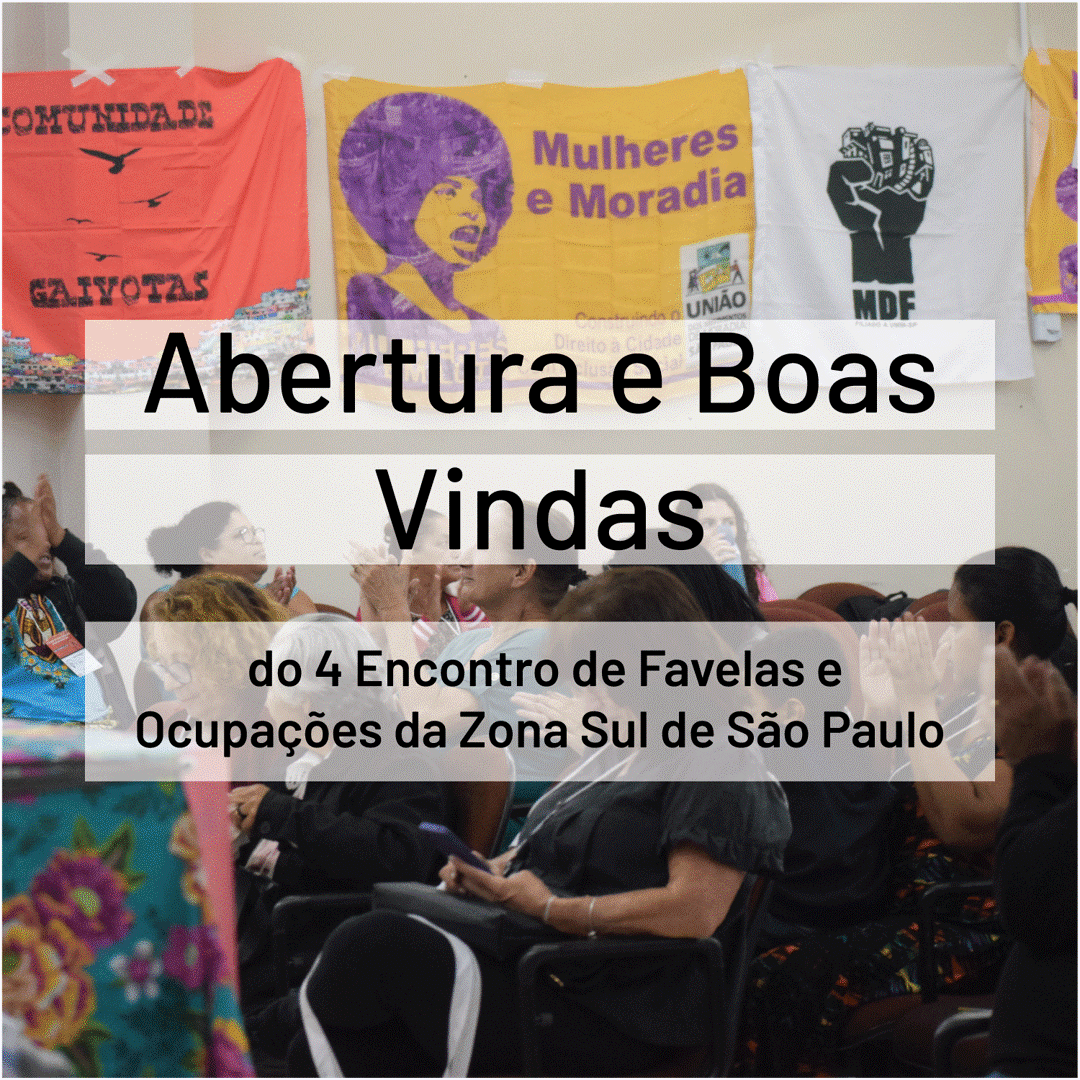
With the theme “Struggles and Resistance in the Southern Region,” the 4th Meeting of Favelas and Occupations in São Paulo’s South Periphery brought together 110 leaders and community members, the Public Defensor’s Office, housing movements, technical consultancies, universities, and research laboratories at the Metropolitan Curia in Santo Amaro, São Paulo, on June 24, 2024.
The day started with holding hands and dancing in a circle to the music of Zé Vicente. Dona Olga Quiroga led the mystic and invited all to sing “é moradia, moradia é moradia…” Inspired and energized, the opening words resonated loudly: “A moradia é a porta de entrada para todos os outros direitos”.”
The Encontros are opportunities for communities to come together, share their experiences and struggles, and learn from each other. Community-based projects developed in collaboration with academic partners are presented so everybody can engage. Two projects are on display this time: “Calor e Moradia Auto Construida” investigates techniques to counter heat in favelas and occupations, and the “PIU Arco Jurubatuba and ZEIS” visualizes the impacts for favela and occupation dwellers in the Special Zones of Social Interest.
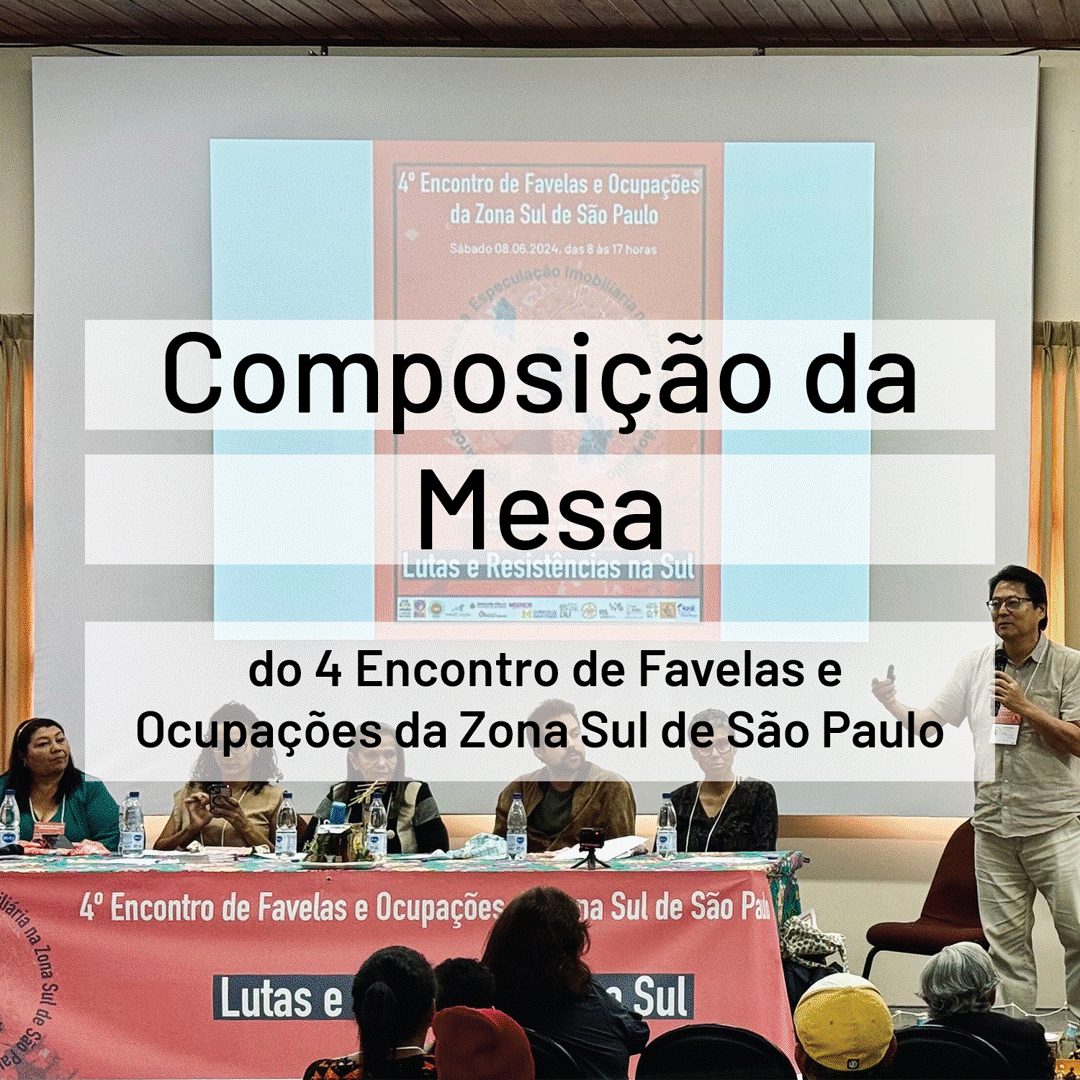
The morning session delved deeper into the ongoing threats of the PIU Arco Jurubatuba and the rampant real estate speculation affecting São Paulo’s South Periphery. Panel participants included public defender Taissa Pinheiro, popular lawyer Vitor Iglesias, Vila Andrade’s community leader Tereza Arrais, and professors Kazuo Nakano and María Arquero. The conversation delved deeper into community mobilization tactics since 2018 to ensure housing provision for favela and occupation dwellers in ZEIS, providing key facts and resources for continued mobilization.
After the panel, community leaders and residents from the region shared their own struggles and the importance of organizing and collective action. Residents from communities in Grajaú shared similar stories of uncertainty and dispossession regarding the municipal plans to implement linear parks in the Billings Reservoir. In all cases, participants underscored the need for more frequent, smaller working meetings to decrease knowledge gaps, amplify community voices, and challenge the flawed participatory process set by the municipal government.
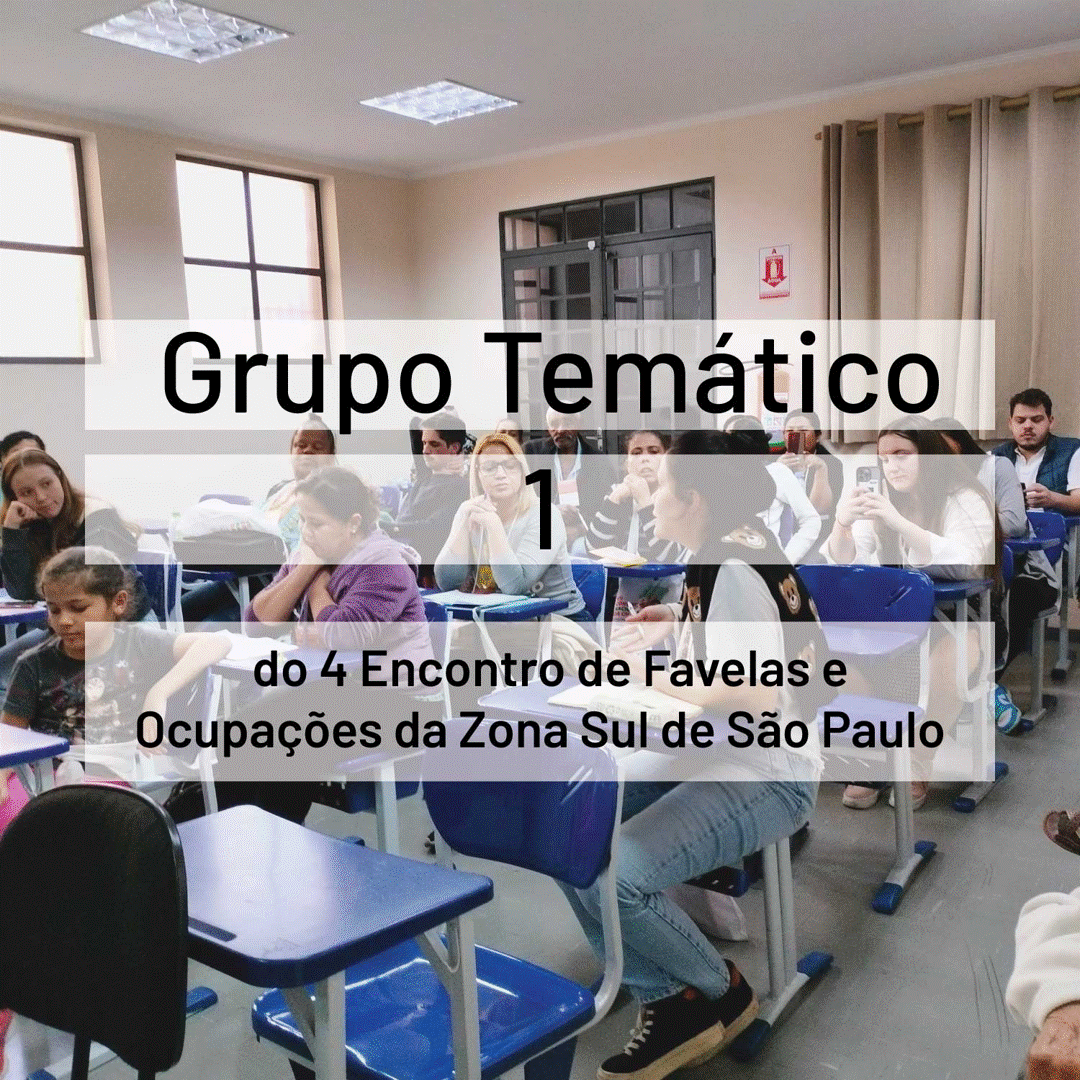
With Andre do Silva from MDF, and Larisa Hiratsuka from Peabiru moderating the session, the group discussed socio-political training and mobilization, community life, and strengthening participation in AIU and ZEIS management councils. Community members voiced concerns regarding the PIU impacts on community and local culture, and the need to gain legal knowledge to better defend communities’ rights. The group called to foster community life and engagement, reclaiming gathering spaces and sharing resources on transport networks, social assistance, health, and education.
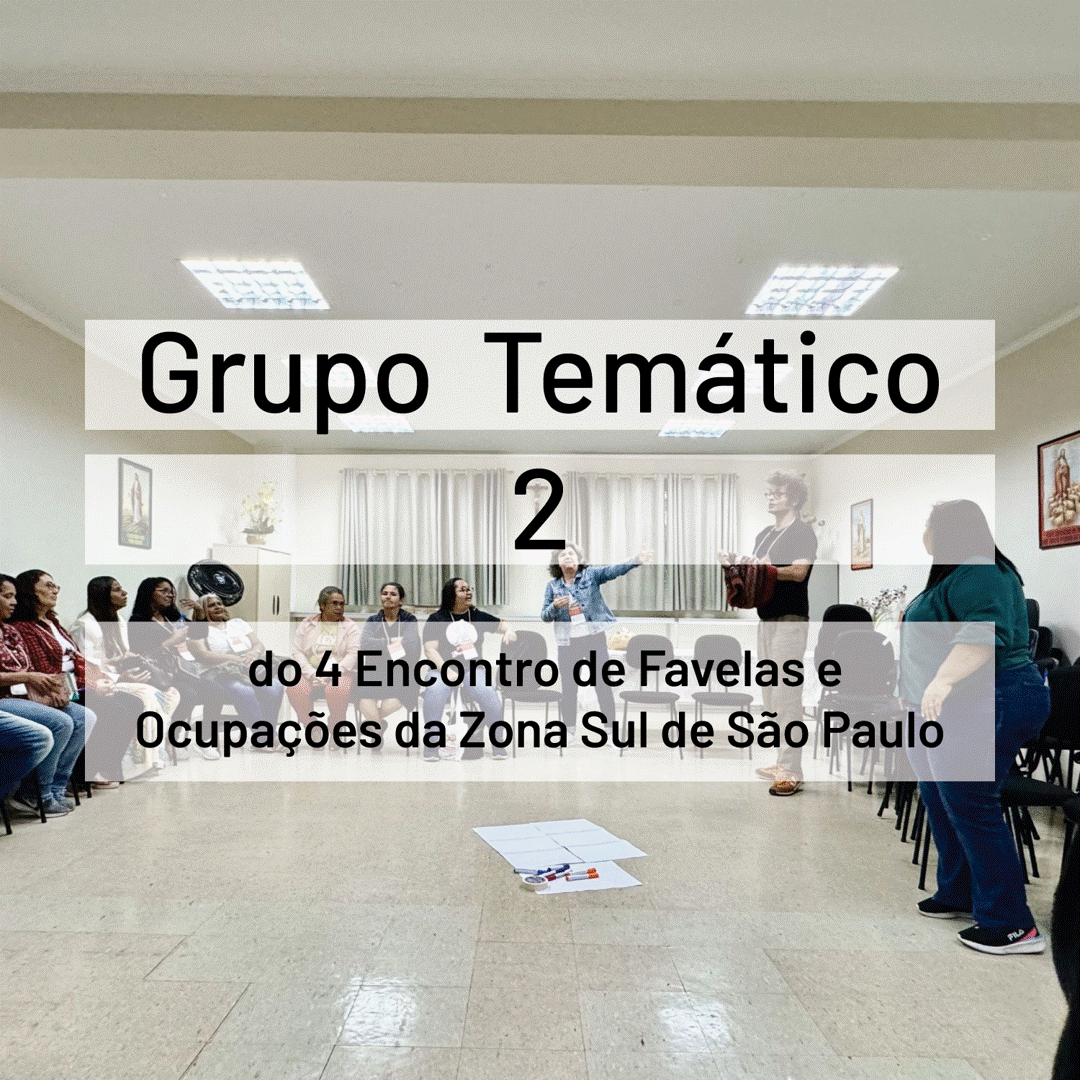
Moderated by architect and urban planner Fernando Botton from LabJUTA and social worker Núria Pardillos, participants in this session called for future meetings closer to the impacted communities and with fewer people to increase participation and strengthen mobilization. The group also discussed the limitations of the rental aid and the need for additional resources, noting the municipality’s lack of transparency and precise information.
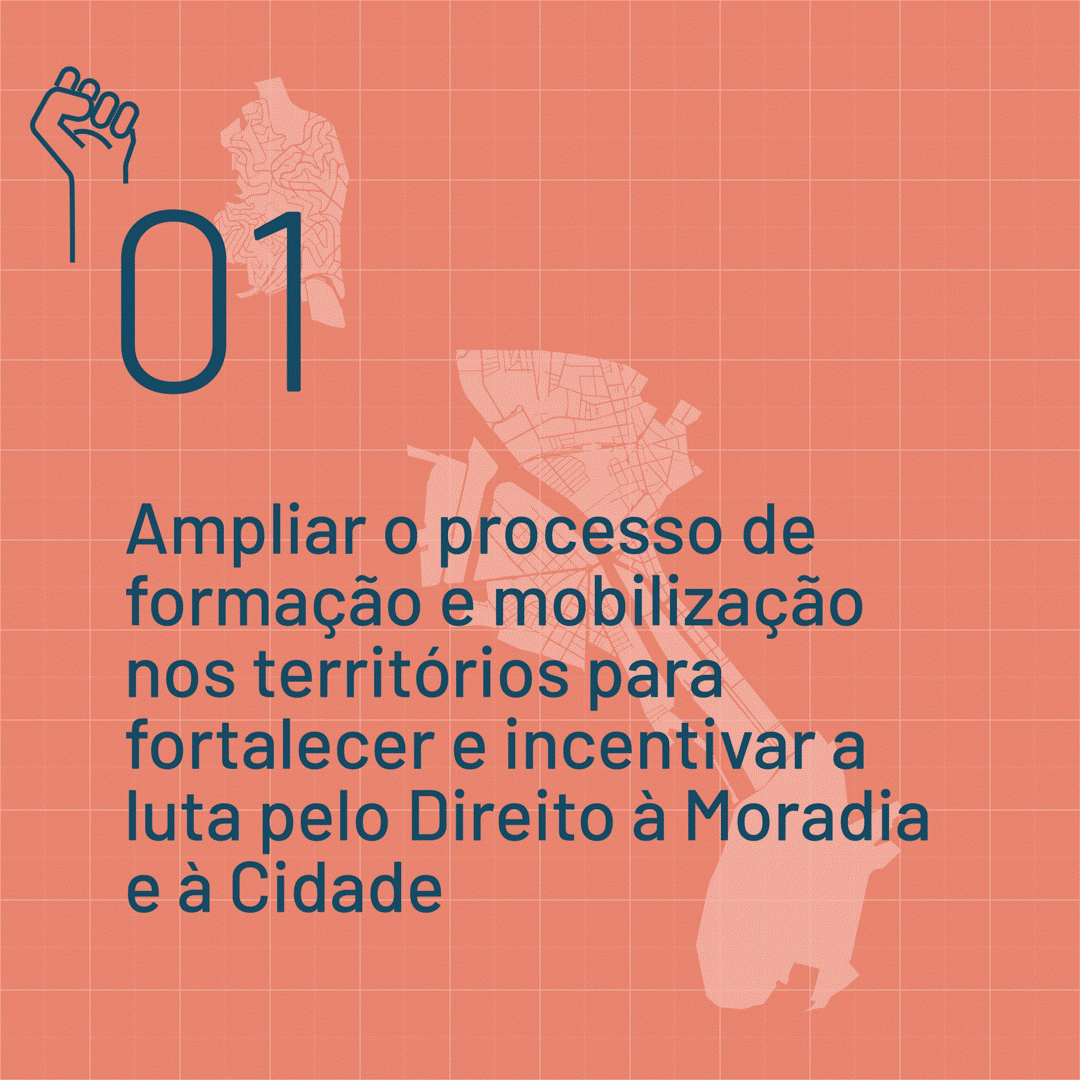
Reporting back from the two parallel sessions, all participants came together to pen an open letter summarizing key points moving forward and committing to continued action. With Dito Barbosa from UMM, CMP and Gaspar Garcia, leading the effort of synthesis, the letter acknowledges the participating communities and network of collaborators and demonstrates the strength of collective organization and mobilization, popular education, and resistance.
The letter is published in the Union of Housing movements website: LINK
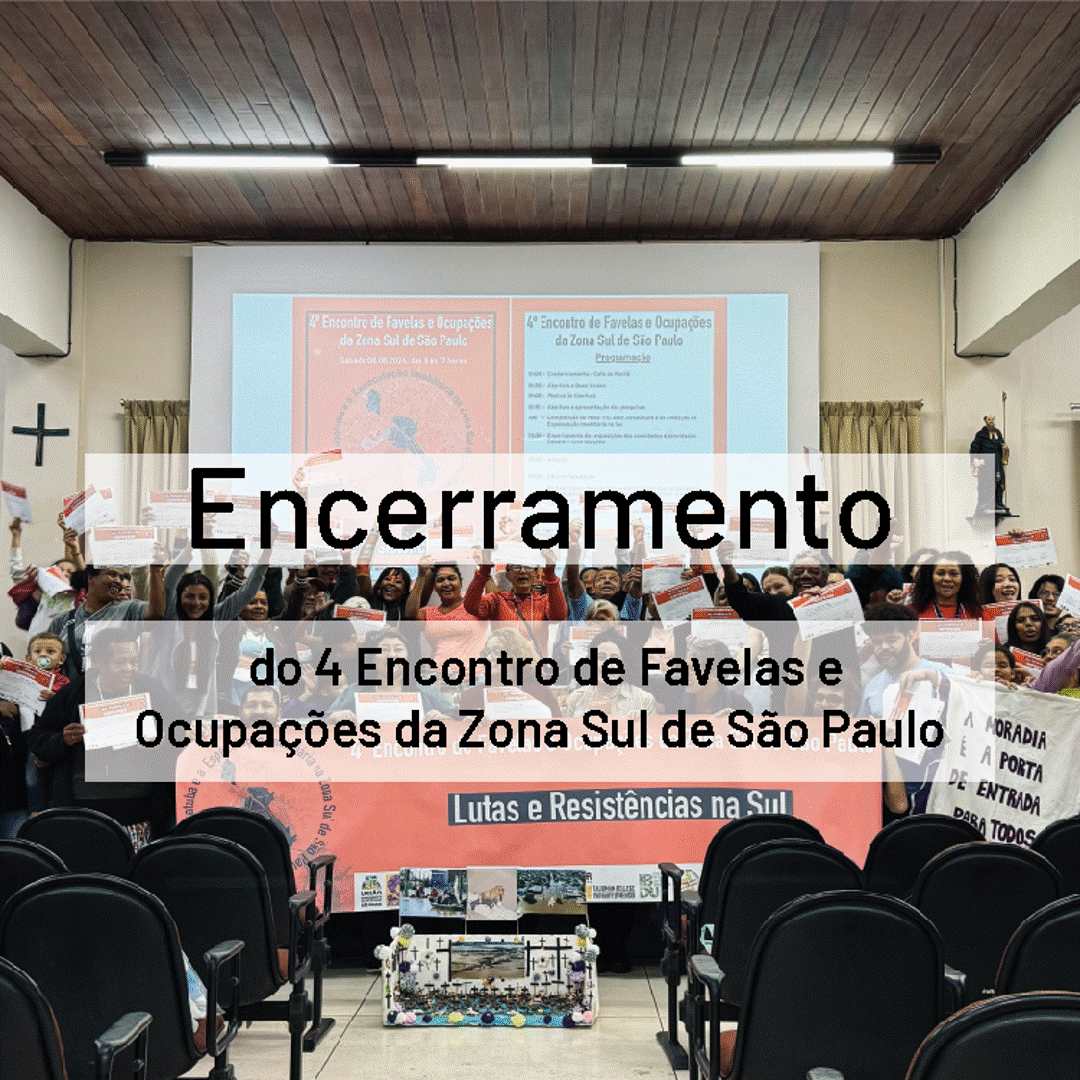
The 4º Encontro de Favelas e Ocupações da Periferia Sul de São Paulo concluded with participants reading the letter manifesto and receiving the diplomas for their participation. With a lot of gratitude for the beautiful work and generosity behind the organization—thanks to Mara and Sheila from UMM, and Cintia from Peabiru–, up to the next convening, the 5º Encontro!
Special Acknowledgments
Marilene Ribeiro de Souza, at Associação Comunidade Pantanal e União dos Movimentos de Moradia, Secretaria das Mulheres
Sheila Cristiane Santos Nobre, Afetos and União dos Movimentos de Moradia Secretaria das Mulheres
Cintia Fidelis, at Peabiru
Tereza Arrais, at Articulação Vila Andrade
Benedito Roberto Barbosa, at UMM, CMP, and Gaspar Garcia Human Rights Center
Fernando Botton, at LabJUTA Universidade Federal do ABC and FIO, Assessoria Técnica Popular
To all community members who shared their insights and stories during our fieldwork and those in attendance during the 4° Encontro de Favelas and Occupations
And last but not least, many thanks to Associate Professor Ana Paula Pimentel Walker for sharing a wealth of knowledge during our time in São Paulo. We are very grateful to be able to contribute to the Public Design Corps Initiative, and the support of Caitlin Cuppernull and Shane Molina Soto at Taubman College truly made a difference.
Student Team
Md Ehsan Alam, Tabita Aitonean, Natalia Boldt, Chin-Chieh Chen (Jess), Stephanie Dutan, Aaron Johnson, Yi-Chien Kuo, Yesha Madhubhai Malaviya, Akshita Mandhyan, Jasmine Paulk, Angie Perez, Mariam Reyes-Toidze, Chun Wang (Sheila)
University of Michigans Sponsoring Units
New Faculty-Led Education Abroad Program Grant,
Vice Provost for Engaged Learning’s Global Engagement
Taubman College Travel Fund